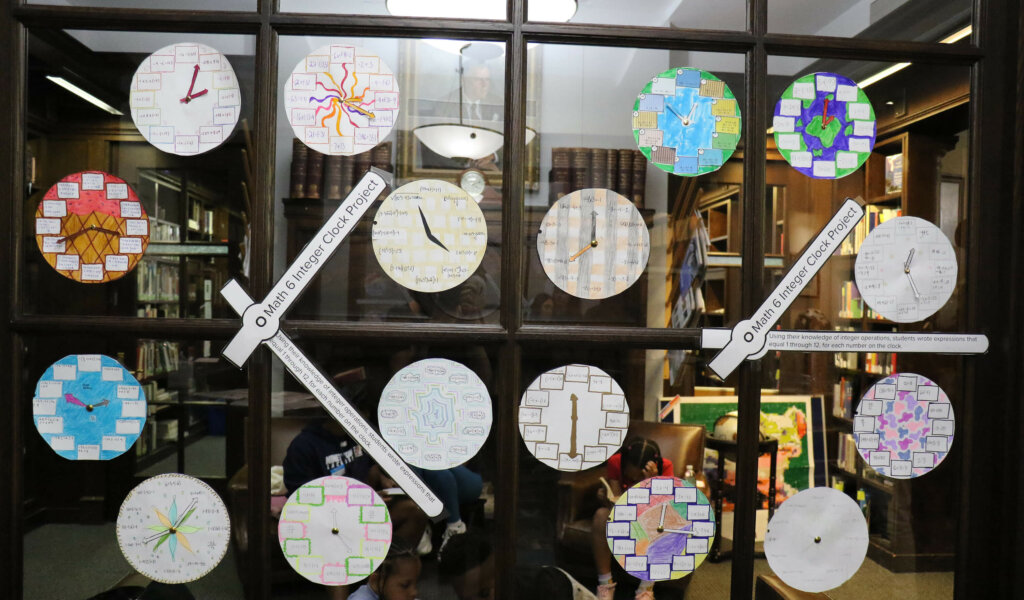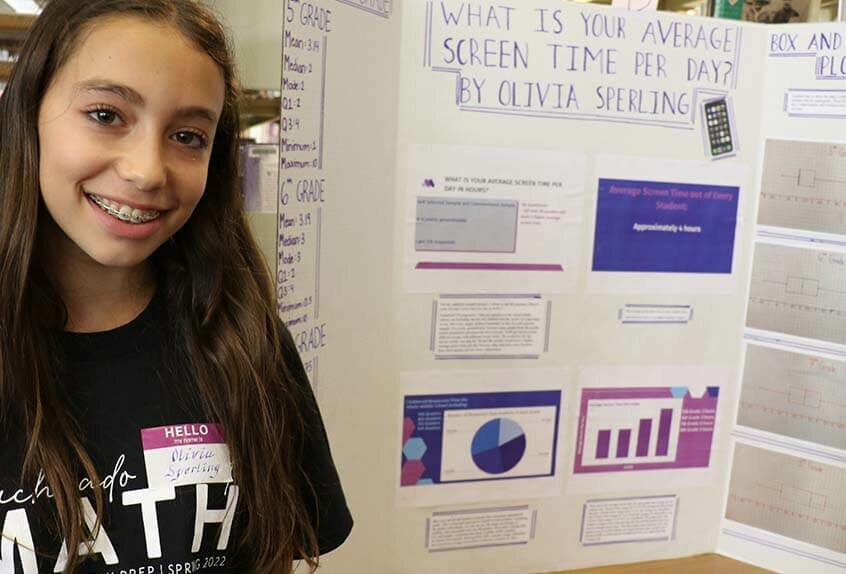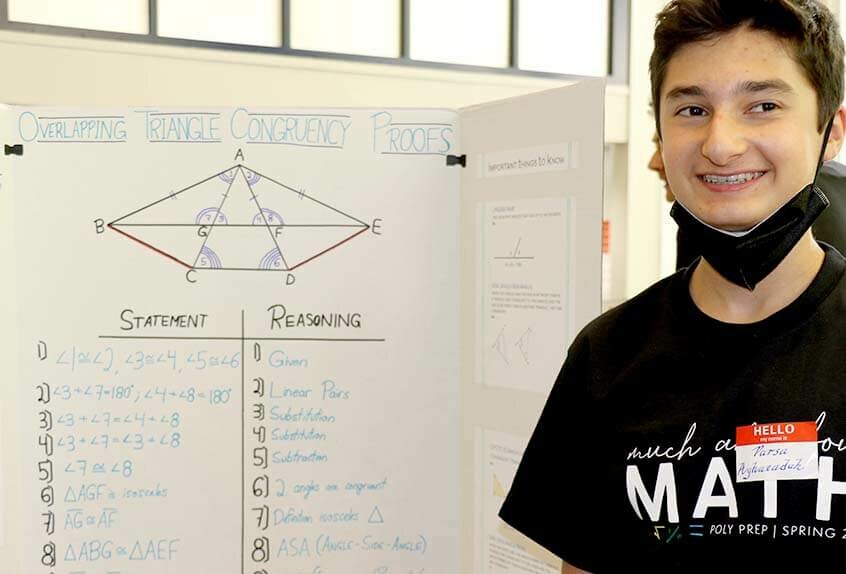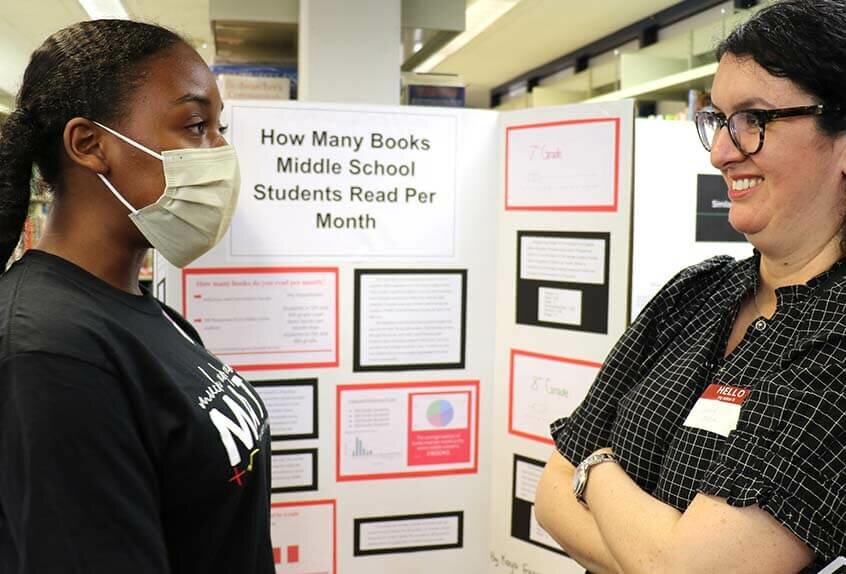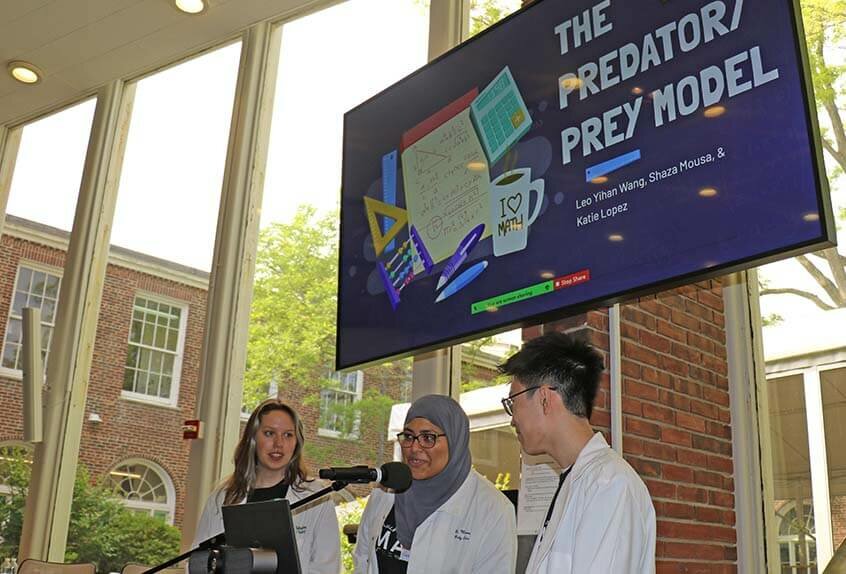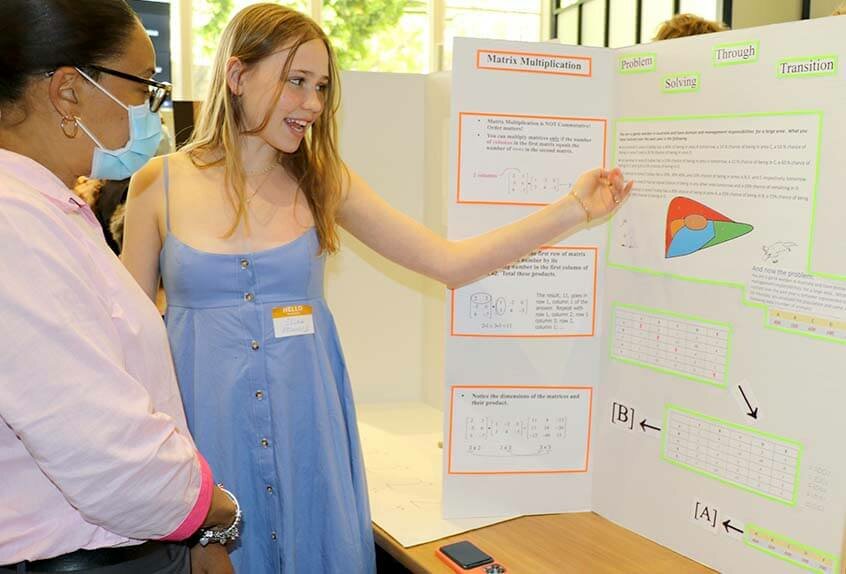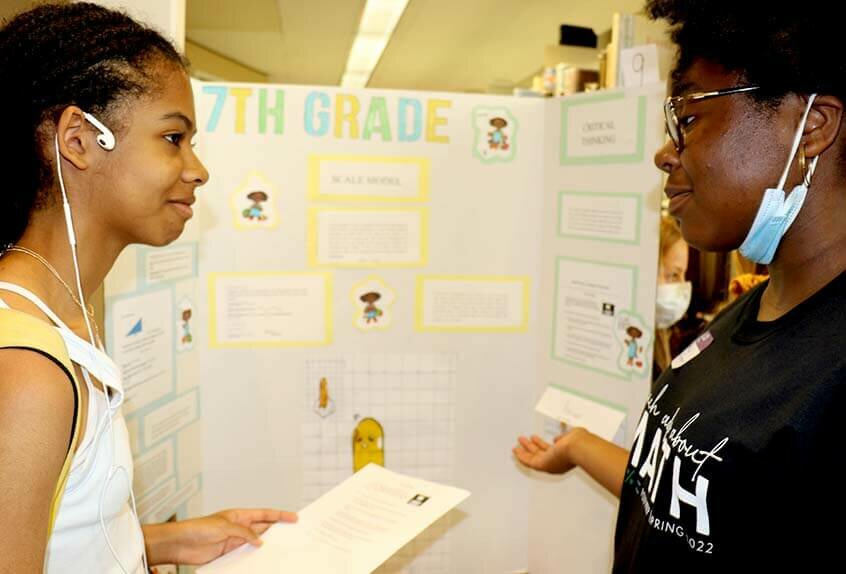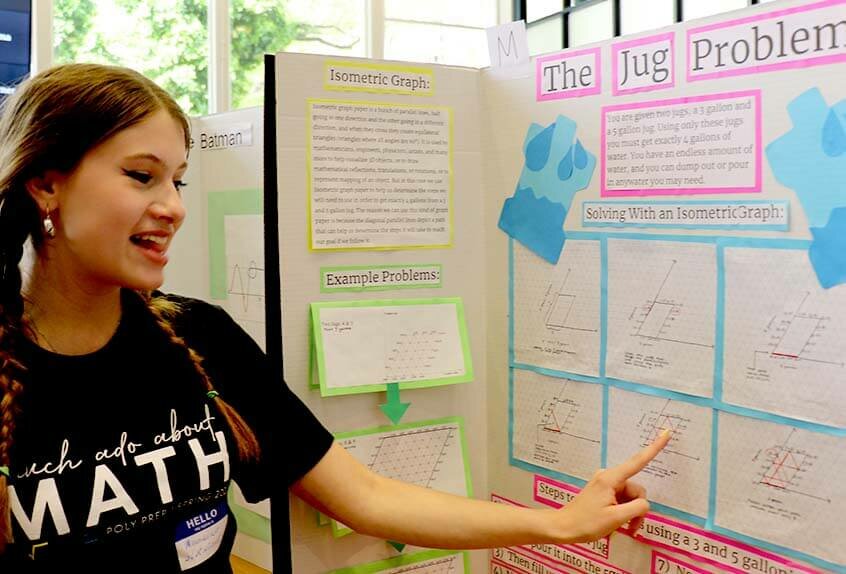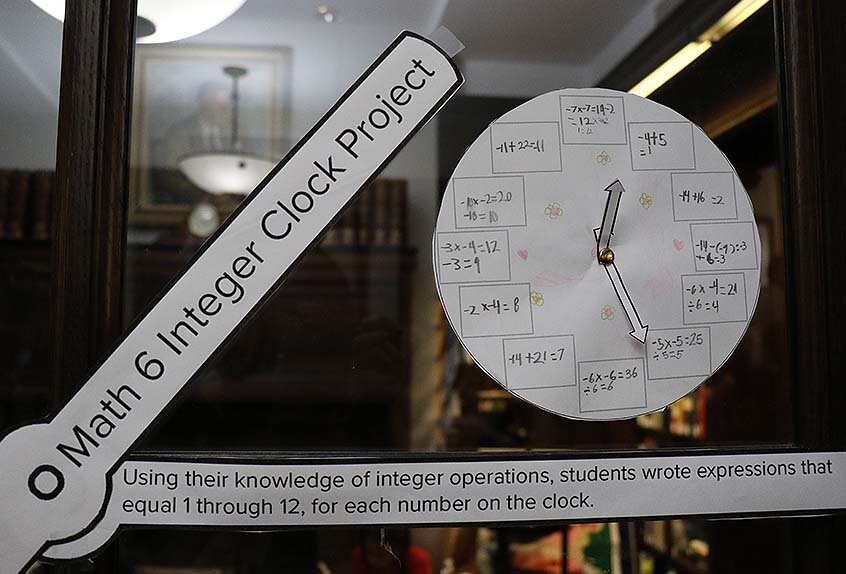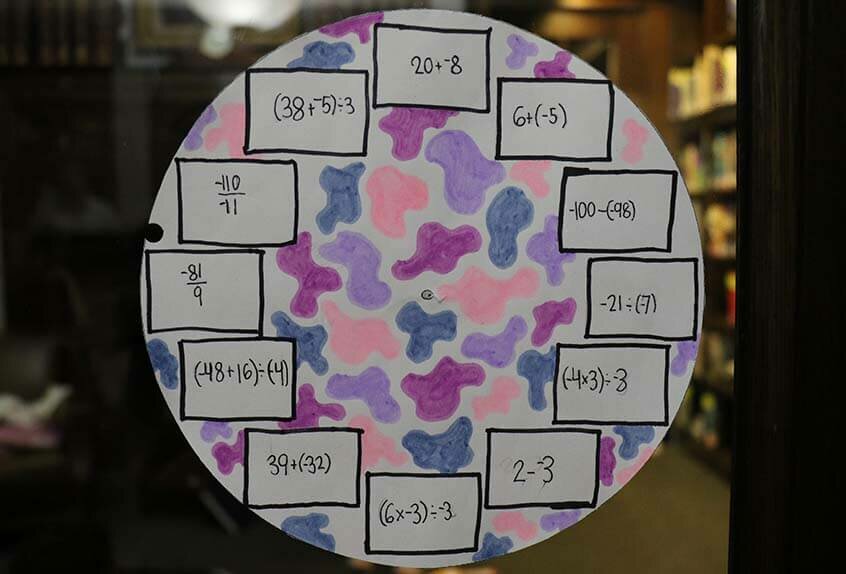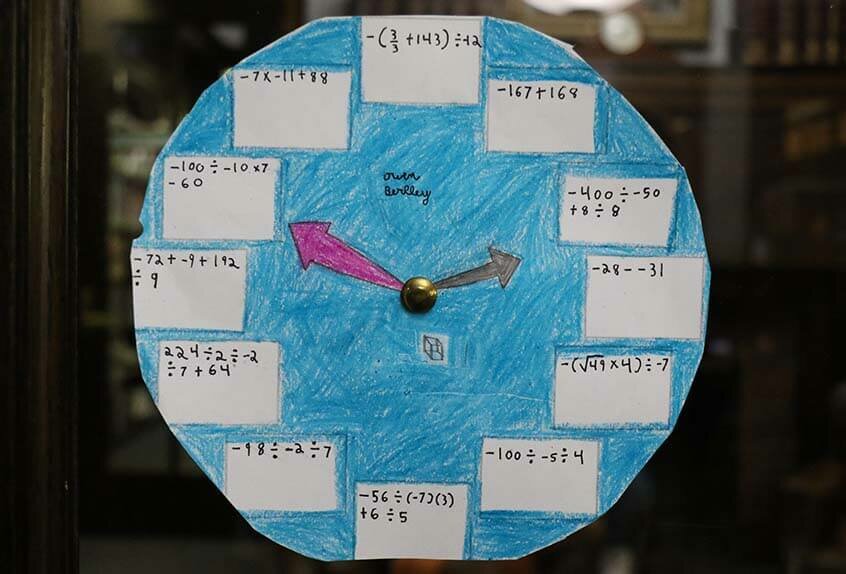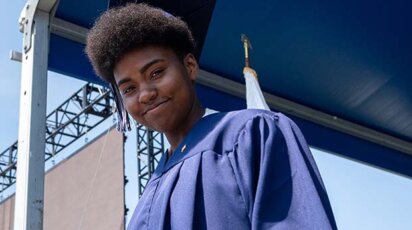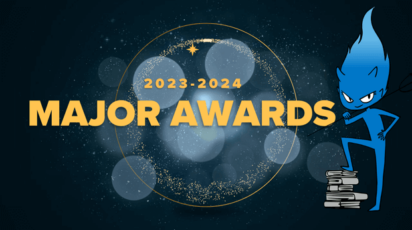News
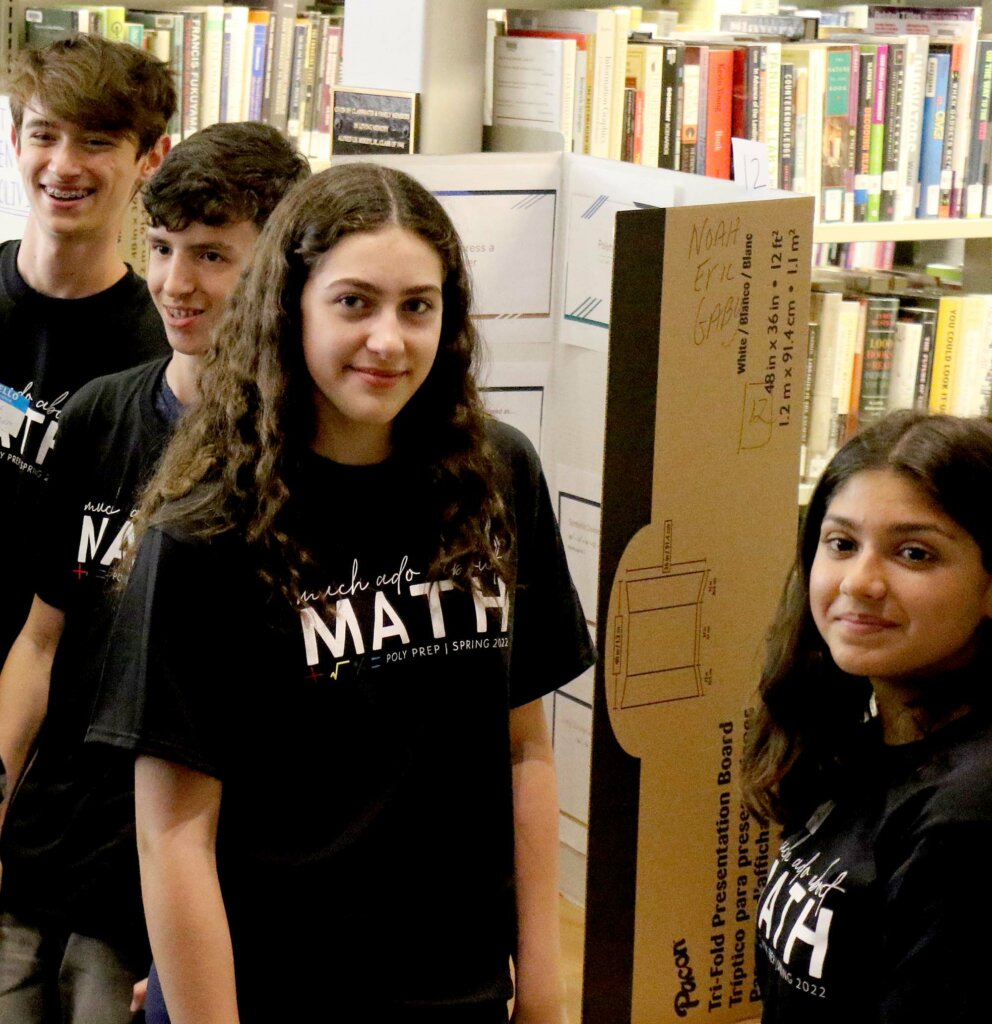
There was definitely Much Ado About Math when parents and students filled the library on May 23 to celebrate the love of mathematical learning in Grades 5-12.
Poly’s Math Department hosted this first Much Ado About Math event at which students presented demonstrations of learning and passion projects from their math classes. Fifth grader Drew B. ‘29 used four triangles to create a geometric animal design. Sixth graders used their knowledge of integer operations to write expressions of 1 through 12 for integer clocks, seventh graders designed mathematical board games, and eighth graders sang a song to explain how to factor a quadratic expression. Guests could take a “gallery walk” around the library and speak with students about their posters or laptop presentations, which explained triangle similarity and congruence, the social impacts of the federal minimum wage, average screen time of a Middle School student, or problem solving through transition matrices, among other topics.

Chair of the Mathematics Department Dr. Maria DiCarlo P’23 welcomed the community to the “celebration of creativity and intellect of our students and their mathematical triumphs.” She then introduced oral presentations by teams of Upper School students. Their topics included the calculus behind climate change and wind energy, math and pandemics, architecture and trigonometry, and other real-world applications of trigonometry. Stephen Playford ‘24 and Ethan Paluszek ‘24 explained how their study of PreCalculus helped them to use real data about COVID from The New York Times to make predictions about the pandemic. Shaza Mousa ‘23, Leo Wang ‘23 and Katie Lopez ‘23 applied the Predator/Prey model to employer/employee relationships in economics. June Dorsch ‘23 used calculus to study carbon emissions in industrial nations with suggestions for solutions to climate change. Vivek Laddha ‘23, Carlo Caffuzzi ‘23, and Tesvara Jiang ‘23 studied data about wind energy in a number of countries to find trends in its use, discovering that Germany uses wind energy most effectively.
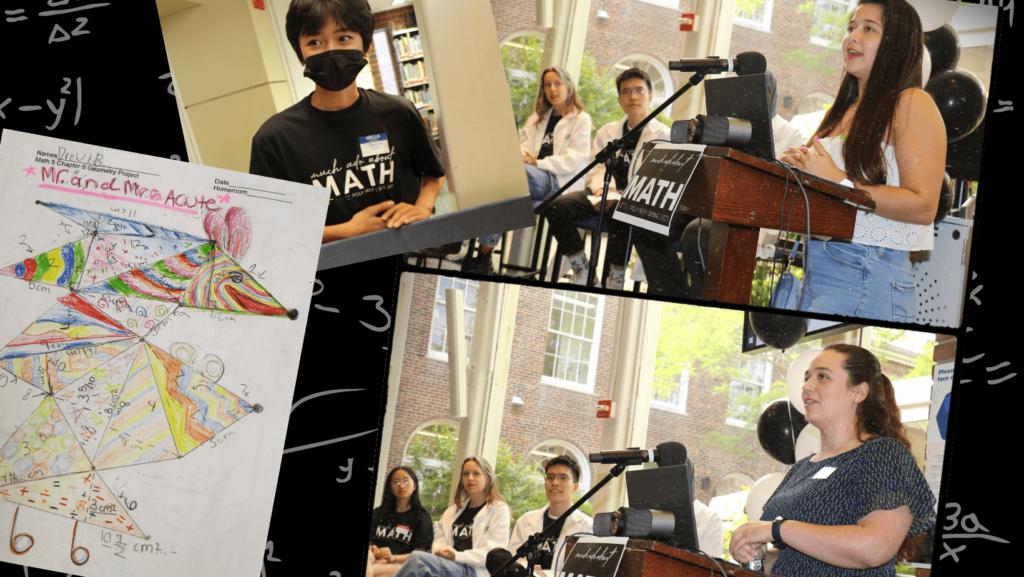
Alumnae Cassie Moriarty ‘15, Blossom Parris ‘17, and Ilene Tisnovsky ‘20 were part of the celebration and shared how math skills learned at Poly have been applied in college and careers such as civil engineering or medicine.
